The Day Trader’s Survival Guide: How to Be Consistently Profitable in Short-Term Markets
$13.34
| Author(s) | |
|---|---|
| Format |
|
| Pages |
248 |
| Publication Year |
2000 |
The Day Trader’s Survival Guide was written 15 years ago and was released in the year 2000. For more up to date information and trading tips from Christopher A. Farrell, including addressing the important changes to market structure and trading on the NYSE and NASDAQ that have occurred over the past decade.
Author’s Note:
In this day and age, successful day trading is about surviving lightning fast market movements, bad executions, the unfair and unscrupulous practices of the Wall Street trading firms, and, last but not least, surviving the ridiculous stereotypes and misinformation about day traders that exist. I am excited about this book because it says many of the things about Wall Street-and about day trading-that other people have been afraid to say.
I’m sure many of you have read the horror stories in the media about investors who have lost their life savings after they “dabbled” in day trading. Many individuals enter the day trading arena with the intention of making a quick killing, and instead the market teaches them a harsh lesson and they leave the arena penniless. In fact, there have been industry reports that say that as many as seven out of every ten day traders ultimately lose money. But not everyone loses money. Some make a very good living, and there are a privileged few-many in their early twenties-who have been able to make six- and seven figure salaries year after year.
Aside from Hollywood, Silicon Valley, and professional sports, successful day traders can make more money in a shorter space of time than they can in any other profession. So what, exacdy, is it about the short-term mechanics of the market that prevents so many day traders from being profitable? What is this mysterious “market force” that has claimed the life savings of so many novice day traders yet is also capable of producing incredible riches for a lucky few who can harness its power? This book is intended to answer that very question.
One of the early mistakes that many novice day traders make is that they get caught up in the hype of the online trading revolution. Technology is advancing at a faster clip every single day, but don’t believe the ads you see on television. Just because you can get a trade executed in a split second with the click of a mouse, that does not mean that you are on a level playing field with the rest of Wall Street.
If most day traders lose money, it logically follows that someone is making money at their expense. If you lose $25,000 playing the market, the money doesn’t just vanish into thin air. So what are all of these day traders doing wrong, and why are they always on the losing side? How come those few day traders who are successful end up with all of their money? Consider this: Do seven out of ten Wall Street trading firms lose money? Do Goldman Sachs, Morgan Stanley, First Boston, and Merrill Lynch consistendy lose money? Absolutely not! They make money hand over fist, year in and year out. This merely proves that there is a way to exploit this system for profit, and it involves beating Wall Street at its own game.
From this point forward, take everything that you ever learned about investing and forget it. The first thing that the day trader must understand is that in the short term stocks act quite differently than they do over the long term. The techniques that apply to long-term investing do not work in the short term. If you approach day trading the same way that you approach investing, you are sure to lose money.
You will learn many things in this book that you have never known before. There are cutting-edge trading strategies mentioned here that you will never see in any other books written on day trading or online trading. My intention in writing this book is not to sell you on the dream of quitting your job and trading for a living. Instead, we will take the high road. This book will show you how it is done. Remember, all of Wall Street is out to take your money. This book will show you how to take their money instead.
Contents:
- Wall Street’s Money-Making Machine
- Gouging the Customer: Dirty Little Secrets of the Online Brokerage Firms
- A Momentum Trader’s Diary
- Instigating the Day Trader Stampede: How the Market Makers Manipulate Stock Prices
- The Day Trader Strikes Back: How You and I Can Manipulate Stock Prices
- The Momentum Trader’s Quiz: Applying What We Have Learned
- The Scalp Trader and the Hunt for Razor-Thin Profits
- Moving the Market: The Scalp Trader and the Art of Trading Illiquid Stocks
- How the Specialist Manipulates Stock Prices to Derail Day Traders
- Arbitrage Trading: Unsustainable Valuations and the Hunt for “Free Money”
- Beating the Specialist at His Own Game
- A Utopian Vision for a Fair Marketplace: The Twenty-four-Hour Unified Exchange, the Virtual Specialist, and the Extinction of Traditional Wall Street
The Day Trader's Survival Guide: How to Be Consistently Profitable in Short-Term Markets By Christopher A. Farrell pdf
20 reviews for The Day Trader’s Survival Guide: How to Be Consistently Profitable in Short-Term Markets
Clear filtersOnly logged in customers who have purchased this product may leave a review.

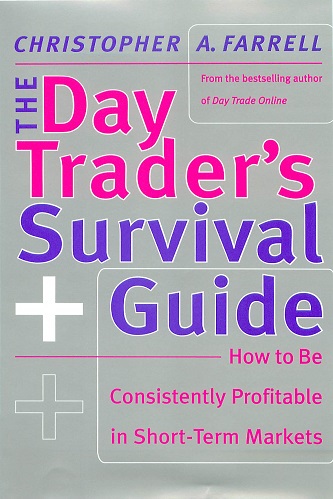
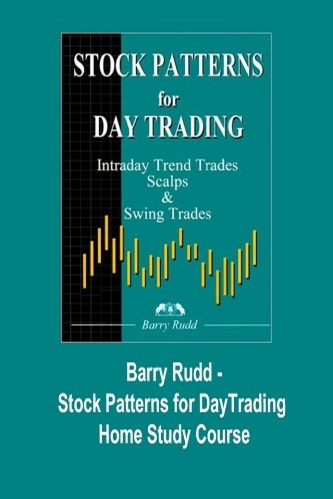

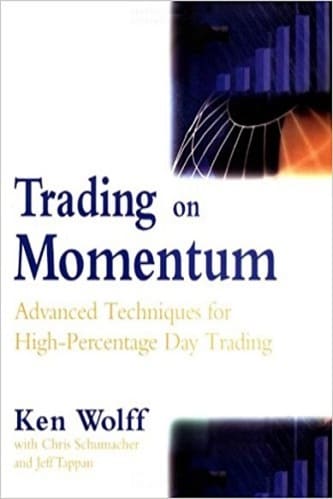
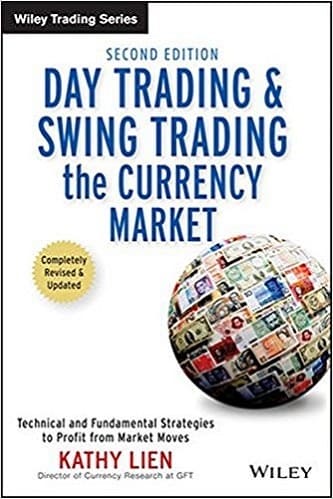
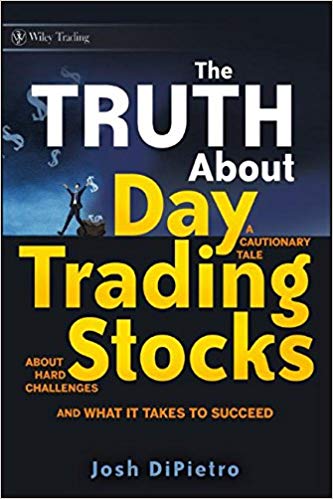
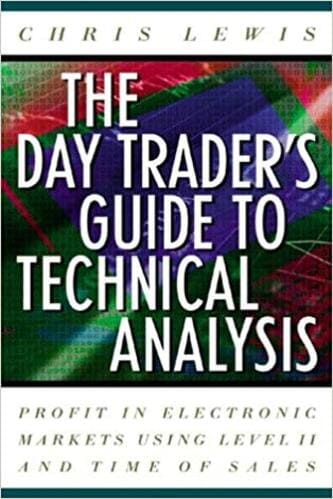
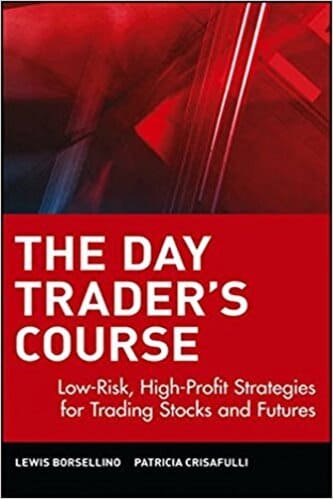
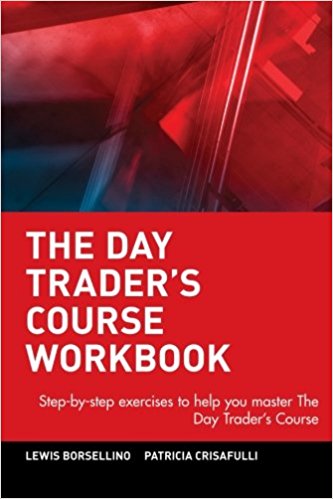
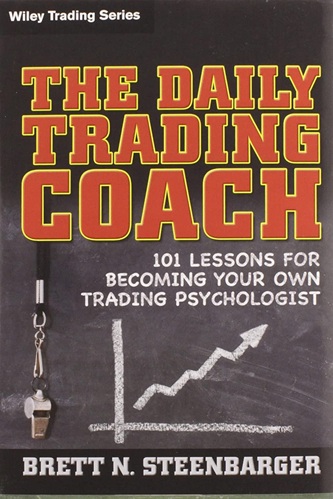
Emmett Lowery (verified owner) –
This most recent book by Chris Farrell confirms his place as the foremost expert on day trading in the country. He seems to be the only one who can (or is willing to)communicate to a broad audience the complexities of day trading and markets in general. His ability to explain in detail his specific trading stategies within the context of overall industry practices and nuances make Chris Farrell stand alone. Congrats!
Eden Manning (verified owner) –
The Authors first book was worth the read and opened areas that most day traders were unaware of. More importantly they worked. Here there is also worthwhile information. However, some of the methods described could easily lead to financial death. This is covered by the authors comments “for experience or professional traders”. However the risk is so great it causes the reader to wonder if anyone has every tried these methods off the floor. If you know the subject this is a good book to add to your collection. But, don’t try this at home.
Myra Montes (verified owner) –
I want to make a few comments – I bought this book and then I bought the two volume video version of it – I give both items high marks for clarity – Farrell takes some very difficult concepts and breaks them down into understandable morsels – for you football fans out there, Farrell’s style is very similar to the “Fox Scope” that breaks down football plays – the author tells it like it is in this book, spending just as much time on the dangers of day trading as he does on how to make money doing it –
Darren Beltran (verified owner) –
Although I myself do not sanction daytrading, I still found the information in this book to be practical, comprehensive and valuable. In fact, any investor or trader could use it, regardless of investment strategy. I was very impressed by the depth of the author’s research, which is presented in a clear and concise manner. The author describes the “nuts and bolts” of stock trading, market making and how to make the whole process work to your advantage. Signs of possible stock manipulation are also well worth reading.
Whether or not daytrading is part of your investment repertoire, this is an excellent investment tool. It educates beginners and experienced investors alike and dispels many investing myths.
Averie Wall (verified owner) –
After reading over 40 books on day trading, I must say that Chris’s book “The Day Traders Survival Guide” should be required study at ALL day trading schools and universitys. He has written the best take for anyone thinking of venturing into the perillous waters of Nasdaq momentum trading. His explanation of Level II is clear and most logical, on a level for beginners and advanced traders alike. He has some slick moves for the NYSE also. Looking back now, I realized I could have save a lot of money on books by just buying this book and Chris’s first book “Day Trade Online”. And of course, Reminiscences of a Stock Operator, These books will make an advanced trader out of anyone. Thanks Chris for being honest and telling the truth.
Jennifer Baker (verified owner) –
This is a beginner’s book that gives a good description on how the NASDAQ and NYSE differ. It is easy to read but to wordy. The techniques that are described seem to only be touched upon and he is pushing one of his video courses thought the book. The basic points do get across, buy when the big money is buying and sell when the big money is selling, don’t pay the spread on the bid ask price, and beware of the specialist in the NYSE. Again a lot of words but not much substance on how to make money and employ these techniques in any depth. It is a beginner’s book all the way.
Alice Ortiz (verified owner) –
This is definately a beginners book. But still a good book. It is abit wordy, but it get the point across. It focuses mainly on the spread of B/A prices and the specialist & market makers. A good book to read before you start trading, but not the only book you should read.
Landon Alfaro (verified owner) –
First off, his website […] which he constantly references, is gone. (he’s even misspelled it once so far)
Admittedly, I’m submitting my review only half-way through the book, but this is nothing more than a modern day alchemist spewing garbage across 200 blank pages.
The author has a very (very) poor understanding of mathematics and economics. An example in chapter 1 confuses buys with shorts. His examples take some rather advanced topics and reduce them to the point that they verge on being dangerous to the reader. He doesn’t explain that his examples (beyond being in dire need of an update) are not real-world cases at all. They’re idealized examples that would breakdown the instant a reader places his or her faith in this book and tries executing a trade.
The book poses a few questions, gives the solutions, and in a poor attempt of filling the pages, ties the two ends together in any-which-way (and often in a rather erroneous way). One example of this: Farrell tries to explain the differences between “thin” and “thick” stocks, sighting in his nonsensical way, that stock splits are the differentiating factor. period. the end. …what he fails to explain (and understand) is that splitting is bad not because -as he reasons- there’s now too many outstanding shares, but because of more complex reasons like the company is trying to open it’s stock to a larger audience for more to participate in (which, by the way, is not necessarily a bad thing.. just a choice of styles).
Damien Strong (verified owner) –
There are some interesting aspects of this book, particularly the chapters on the NYSE specialist system. This seems to be the author’s area of expertise.
As a professional trader, however, I think the author overstates the difficulty in trading NASDAQ stocks and the level of manipulation in the OTC market. Also, some of the information here is inaccurate. For example, he states that momentum traders avoid stocks like Intel, Cisco, and Microsoft. This is not true. I personally trade literally hundreds of thousands of shares of these stocks daily. In addition, he vastly overstates the volatility of NASDAQ stocks, saying that “500 share buy orders will drive the stock up 2 points”. This is ridiculous.
All in all, not bad. The NYSE information is good, but take the NASDAQ chapters with a grain of salt.
Kaydence Robbins (verified owner) –
First book I read on day trading, explains the games other traders are playing to help you identify what is happening in a stock as you watch it intraday.
Very insightful on institutional price manipulation, how we as the little fish can get on the right side of the smart money and swim with them to quick profits.
Good info not commonly shared or explained as well as this.
Yasmin Bell (verified owner) –
This book was very good back in it’s day. I think the author should publish a revized edition with more up to date strategies.
When trading short term one needs to realize that the stock market can present us with a lot of hot stocks every day.
Most of them may seem promising, but the truth is that a good number of these trading & investing opportunities might not be as profitable as one might think. That’s why it’s very important to know how to choose them especially if you plan to take advantage of them on a daily or weekly basis.
One site that I recommend is MomentumStockTrading com. They have a pretty clear way for trading hot stocks with momentum using easy to understand strategies. This is also a place where you can learn why knowing how to manage the stock rally is critical to your success.
Finnegan Ramos (verified owner) –
These days it’s really hard to find trading books that are as practical and simple to understand as this one. Most of the info outhere is full of the same thecnical analysis jargon that makes you lose a lot of times. Basically most tehcnical trading books tell you the same story but organized in different chapters using different words and charts as examples.
Some places on the web have pretty practical information also. One site that I recommend is ChatHotStocks com. They have a pretty clear way for trading momentum stocks using easy to understand strategies. This is also one place where you can understand why the use of a Level 2 system is critical for trading the rally.
Understanding how to trade a rally is one of the most important aspects of trading, since for us traders it’s all about the rally.
Cara Maxwell (verified owner) –
I bought this book after reading the recent positive review in Online Investor Magazine (Feb issue) – this book is not some loose, “how to” book on day trading – instead, the author spends his time slicing and dicing many of “the shady ways” in which both the NASDAQ market makers, and NYSE specialists operate –
is by far the most in-depth day trading book of the 10 I have bought because it talks about issues that, literally, none of the other day trading books I have ever read even mention – this books wastes no time on the “getting started 101” nonsense that so many other day trading books talk about (how to get started, what broker to choose) – also, this guy actually worked as a bond trader on Wall Street before he got started – so I think his perspective on “the shady side” of how Wall Street works is a bit more accurate than the others – Here is why I liked the book: Farrell attacks things like: why the NASDAQ can be so tricky, how the NYSE specialist can made a stock collapse by cancelling bids, how big firms like Goldman Sachs can hold a stock down with the appearance of 100 share sell orders, how hidden orders affect the supply and demand in a stock – this is all stuff that I had absolutely no idea even went on
Issac Allen (verified owner) –
The first thing I look at when I pick up a trading book is when it was published. Pick this one up–“Copyright 2000.” That immediately sets off a siren in my head, and warns me to take everything in the book with a substantial amount of salt. Anyone can write a book on how to successfully invest in a market where everything is hot–if you don’t believe me, do a search of real estate investment books and see how many of them are older than the current boom. When everyone’s an expert–well, just be careful. Couple that with the fact that this guy’s website is gone–I’ve read up a little on him and it would appear he’s no longer trading–and caution is definitely warranted.
That having been said, I was able to glean from this work some important information, and certainly picked up a couple tidbits that I’ve found useful. This was one of the first daytrading books I ever read, and I think it has its merits for a strict novice. Farrell’s sections on NASDAQ level II were insightful as were his thoughts on trading NASDAQ vs. NYSE stocks. His rants on the evil nature of “market makers” and how they’re out to get individual daytraders is probably overblown but certainly worth thinking about. And though most of us will never move the kind of capital around required to “scalp trade” (meaning you trade a huge position and hope for a razor-thin margin), I found the technique interesting.
In short, I wouldn’t use this book as a basis for a trading strategy, and would keep in mind the fact that most of these techniques are outdated. Look, for example, at the other reviews of this book–the most recent ones rate this book much lower than those written in the heyday era (or even shortly after). I do believe, though, in assimilating useful information wherever it is found, and that having been said I’d recommend this book for a casual read, not to be taken too seriously and keeping in mind that the value of the author’s opinions are very limited. If anything, view it as a daytrading history lesson, and learn from the mistakes of the past.
Kamryn Chang (verified owner) –
as a somewhat active online trader, i was both surprised and blown away by alot of what I read in this book – particularly about the kind of nonsense that is allowed to go on in the NASDAQ –
As someone who has bought about 14 day trading books in the past year,I guess I’m as good a critic as anyone – this book is so far ahead of the other daytrading books in both quality, illustrations, and content that it stands alone –
I am a firm believer that if you can walk away with 1 or 2 lasting ideas from any book than you are ahead of the game – Farrell book has about 15 such ideas – not to mention I think that the 3 sections on how the market makers, NYSE specialists, and day traders manipulate stock prices is the most informative chapters in any of the daytrading books out there
Ezra Rivas (verified owner) –
This book is okay but outdated. I would read it only if you have time.
Abner Santana (verified owner) –
Yes, it way did. And I remember the first time I read this book I was very surprised and stunned. Also Farrel was writing very emotionally getting you even more stunned.
This book is simply a must-read if you’re trading using level 2 quotes (and keep losing).
This book told me THAT tricks are being played, and WHAT tricks are being played. And it told me that I had to look at the supply-and-demand screen much differently than before because not all tricks market makers were using are covered.
Sad to say that once the Super Montage is implemented this book (and the tricks uncovered) will be kind of obsolete.
Margo Herrera (verified owner) –
There are many daytrading books out these days. I’ve read quite a few of them, each having a different slant on how to attain success at trading the stock markets successfully. Most involve trading Nasdaq stocks exclusively, while focusing on market maker activity, support and resistance, chart setups or patterns, etc.
Christopher A. Farrell’s book stands out as a different and brutally honest look at both the Nasdaq and the NYSE, how they work, and the pitfalls they hold for traders. Numerous quotes by market notables supporting the author’s contentions are interspersed throughout the book.
One of the book’s major themes is technical and fundamental analysis are useless to the daytrader who is contemplating a trade where a large market maker could be manipulating the stock’s price. I couldn’t agree more. However, I believe the author goes too far in discounting the usefulness of these valuable tools, as he sounds as if he believes that charts and fundamental information would never enter in as valid trading criteria in any other styles of trading. Nevertheless, I found his insights about market makers to be invaluable.
Ways in which a trader can gain somewhat of an edge over the Nasdaq market makers are spelled out, such as how to use “hidden orders.” Also, “Spoofing” was a very interesting tactic exposed by the author: the advertising of huge size to buy or sell on Level II with no desire to be filled, but to manipulate the stock higher or lower. The author is very experienced at trading.
Insights into the NYSE specialist’s role are covered in great detail, as well as a number of NYSE daytrading tactics. The author puts us in the specialist’s shoes, giving various scenarios of market conditions and what a specialist does in his own interest and in the interest of the public. A more informative piece I have not read.
The author concludes by speculating on a trading world of totally fair markets, or “The 24-hour Unified Exchange, the Virtual Specialist, and the Extinction of Wall Street.” A nice sentiment, but a lot of big money and influence stands in the way. All told, this book is an excellent read for any trader.
Ari Clements (verified owner) –
I think this book would be better read as a 3rd or forth book if your trying to learn the game of day trading.
Estelle Le (verified owner) –
This book is honest, that’s why I give it five stars. Unless the basic principle of Farrell’s trading, the ability to get in front of the market makers, changed, the principles of this book should stand. The fact that the book is boring and unexciting indicates to me that the author is a trader, not marketer of his trading system.
Most exciting approaches in trading don’t work. Good trading is boring (and often frustrating). So is trading approach described in this book. You are advised to trade static, non-moving stocks and make money on the double, joining the market makers. That’s it. This strategy allows good risk control. And instead of day trading this method (I think) may be used for low maintenance trading too.
This method is not based on technical analysis, the feeding pot for many authors writing trading books. No new indicators or just discovered rules. Totally different approach. That’s why it may work.